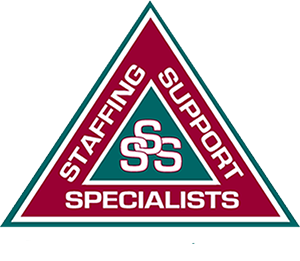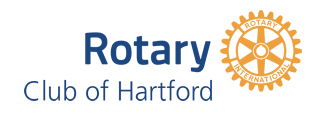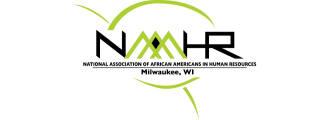Saving for retirement can seem like a distant and daunting task. You’ve probably heard that the earlier you start saving, the more your money will grow. But putting money aside on your own may not be the most effective way to save for retirement. Thankfully, there are financial tools available to help you achieve your retirement goals. One of those financial tools is a 401(k) retirement plan.
What is a 401(k)?

A 401(k) is a popular retirement account for building a secure financial future. This plan is available to employees of many organizations and offers numerous advantages to help you achieve your retirement goals. Some of those advantages include tax advantages, matching contributions, and portability.
If you are wondering how this retirement plan can help you, the following are five benefits of a 401(k).
5 Benefits of a 401(k)
Prepares for Retirement
The biggest benefit of a 401(k) plan is that your money is automatically transferred into your 401(k) account, allowing you to passively prepare for retirement. Since these accounts are made for long-term investment purposes, all you have to do is set up your account, decide your contribution, and watch your money grow. You can also contribute more savings in a 401(k) plan than into standard IRAs. This allows you to focus on other important aspects of your life while still safeguarding your future.
Tax Advantages: Money is Taken Out Before Taxes
A 401(k) plan is a tax-advantaged retirement savings account that enables you to save a portion of your pre-tax income. Contributions are typically tax-deductible, which can lower your taxable income in the year you make them. Additionally, the money in your 401(k) account grows tax-free until you withdraw it in retirement, allowing you to accumulate a potentially larger retirement nest egg.
Typically, your contributions are deducted from your paycheck before taxes, making it easy to automatically save for retirement. This also means you are less likely to spend the money you would have otherwise saved.
Please be aware that many 401(k) plans offer a second alternative to deduct contributions “post” taxes which is referred to as a Roth option. If this option is chosen, all earned interest will be tax-free even after withdrawal. Talk to your financial advisor to determine which method is best for you.
You Decide How Much to Contribute
Maxing out your 401(k) contributions can help you save money on taxes while saving for retirement. Essentially, you decide the percentage of your paycheck that you want to contribute to your plan. Once these contributions are in your 401(k), there are penalties for withdrawing under certain circumstances. That is why it is important to take the time to research how much you can afford to withhold from your paycheck without it adversely affecting your finances right now.
Some 401(k) providers generally recommend that you save anywhere between 10% and 15% of your paycheck for retirement. However, most participants are not usually saving this much. The average 401(k) contribution was 7% in 2021, according to Vanguard 401(k) plan data, but that jumps to 11% when employer contributions are included. Only 23% of 401(k) participants save more than 10% of their salary for retirement.
Many employers offer a matching contribution to their employees’ 401(k) accounts, which can significantly boost your retirement savings. For example, if your employer matches 50 cents on the dollar up to a certain percentage of your salary, that’s like getting an immediate 50% return on your investment.
You can always adjust your percentage based on your investment/retirement goals. So if you find out you want to raise or lower your contribution, contact your 401(k) provider to make the necessary changes.
The Sooner You Invest, The More Money You Have
Making the decision to invest in a 401(k) sooner rather than later will benefit you greatly in the future. Saving a small amount in your 20s can grow to an impressive sum by your 60s due to the power of compound interest. If you do not start saving until your 40s, you will need to save a lot more each year to achieve the same result.
For example, what happens if you start contributing $200 per month to your 401(k) plan at age 25 and continue to do so until age 65? Assuming a 7% annual return on investment, your total savings would be over $550,000 by the time you retire. However, if you wait until age 35 to start contributing the same amount, your total savings would only be less than $280,000—a bit more than half of what you could have saved if you had started 10 years earlier.
Of course, not everyone has the same opportunities to start a 401(k) at an earlier age, and that is okay. There is a special catch-up contribution option for workers who are 50 years old and older. If you’re interested, here is a calculator to help with your 401(k) planning.
Portability: Your Money Stays With You
One of the great benefits of a 401(k) retirement plan is its portability. This means that if you leave your current job, you can take your 401(k) savings with you and transfer it to a new retirement account without penalty. This is important because it allows you to maintain control over your retirement savings and avoid losing the contributions you’ve made.
There are generally two options for moving your 401(k) savings when you leave a job: you can either roll it over into an Individual Retirement Account (IRA) or transfer it to your new employer’s 401(k) plan. Talk to your new employer or a financial advisor to see which option may suit you best.
It is also important to note that there may be fees associated with moving your 401(k) savings. Certain types of 401(k) plans, such as those with employer stock holdings or loans, may have more complex transfer rules. Therefore, it is important to understand the rules and fees associated with transferring your 401(k) before making any decisions.













